Watch for suspiciously low prices that seem too good to be true, as they often indicate hidden problems or defects. Avoid consoles with missing essential components like power cables, damaged controller buttons, or broken disc drives. Look for physical damage signs like cracks, excessive dirt, or unusual odors that suggest poor maintenance. Be wary of sellers who refuse in-person testing or provide vague answers about the console’s history and repairs. Understanding these warning signs will help you make smarter purchasing decisions.
Suspiciously Low Prices That Seem Too Good to Be True
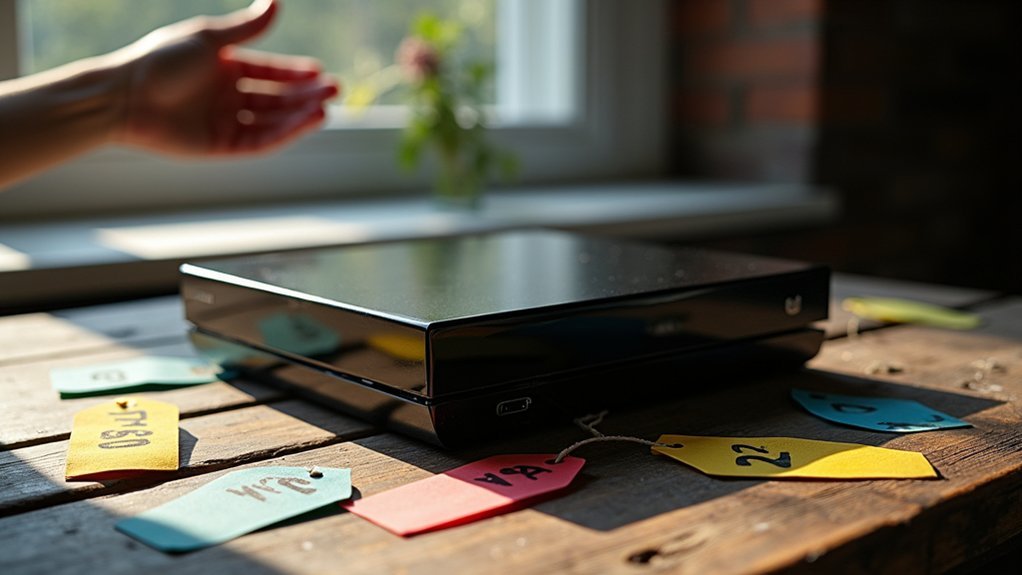
While everyone loves a great deal, suspiciously low prices on used consoles often signal hidden problems that sellers aren’t disclosing. When you see prices considerably below market value, you’re likely looking at red flags indicating missing parts, functional defects, or other hidden issues.
Before making any purchase, research actual selling prices using platforms like eBay’s Sold Listings feature. This helps you verify whether the asking price aligns with real market values and spot potential scams.
Research completed eBay sales before buying to confirm fair market pricing and avoid costly scams targeting uninformed buyers.
Pay attention if sellers won’t allow testing beforehand – that’s a major warning sign the console could be faulty or counterfeit.
Also consider the console’s age and condition; older models priced unusually low compared to similar units may have serious problems like overheating or considerable wear affecting functionality.
Missing or Damaged Essential Components and Accessories
When inspecting a used console, you’ll want to verify that all essential components are present and functional before making your purchase.
Missing power cables or HDMI cords mean you’ll face additional replacement costs, while damaged controller buttons can make certain games unplayable.
A broken disc drive represents one of the most serious issues you can encounter, as it’ll severely limit your gaming library and require expensive repairs.
Missing Power Cables
One major red flag you’ll encounter is a used console sold without its power cable or with damaged essential components. Missing power cables prevent you from testing the console’s functionality before purchase, greatly increasing your risk of buying a non-working unit.
Beyond functionality concerns, damaged cables create serious safety hazards that could lead to electrical malfunctions or fires during use.
You’ll find that essential components aren’t easily replaceable, adding unexpected costs to your purchase. Always verify accessories are original and compatible with your console model, as generic cables often cause performance issues.
When components are missing, it typically indicates poor care or maintenance. Don’t overlook this warning sign—it could save you money and potential safety risks.
Damaged Controller Buttons
Controllers with damaged buttons reveal extensive wear that often signals poor treatment of the entire console system. When examining a used gaming console, you’ll want to press every button to check loading responsiveness. Missing or stuck buttons create frustrating gameplay experiences and indicate the controller needs replacement, adding unexpected costs to your purchase.
Pay special attention to triggers and bumpers, as these components fail frequently and cost considerably to repair. Test analog sticks thoroughly for drift issues that cause erratic character movement.
Don’t overlook the overall cleanliness of controllers either. Excessive grime suggests neglect and potentially hidden internal problems.
Always verify that included accessories match original specifications, as counterfeit components compromise your gaming experience and console compatibility.
Broken Disc Drives
Beyond controller issues, broken disc drives represent one of the most expensive problems you’ll encounter with used consoles.
When the disc drive fails, your console can’t read physical game discs, severely limiting your gaming library and functionality. Before purchasing, visually inspect the drive for misalignment or listen for unusual grinding noises during operation.
Always test the disc drive with an actual game disc to confirm it works properly. Don’t skip this step – it’ll save you from costly repairs later.
Additionally, verify that essential accessories like power cables, controllers, memory cards, and HDMI cables are included and undamaged. Missing components mean extra replacement costs, while damaged accessories can negatively impact your overall gaming experience and console performance.
Signs of Physical Damage and Poor Maintenance
You’ll want to carefully examine the console’s exterior for any cracks, dents, or deep scratches that might signal previous drops or rough handling.
These physical damages often indicate internal components could be compromised, even if the system appears to function normally during testing.
Additionally, pay close attention to the overall cleanliness of the device, as excessive dirt buildup or grime can reveal poor maintenance habits and potentially mask more serious underlying problems.
Exterior Cracks and Dents
The console’s exterior acts as your first line of defense against potential problems lurking beneath the surface.
When examining a used console, carefully inspect for cracks and dents that reveal the device’s history. These exterior damages often indicate drops or rough handling that could’ve compromised internal components like circuit boards or disk drives.
Pay close attention to deep scratches across the surface, as they suggest excessive wear and potentially careless previous ownership.
Missing buttons or cover panels aren’t just cosmetic issues—they can affect functionality and expose internal parts to dust and debris.
Don’t ignore unusual odors like smoke or mold, which signal serious prior damage or poor storage conditions that could affect performance long-term.
Poor Cleanliness Indicators
While exterior damage reveals obvious mistreatment, cleanliness tells an equally important story about how well someone cared for their console. Poor cleanliness indicators can signal deeper maintenance issues that’ll cost you later.
| Warning Sign | What It Means |
|---|---|
| Excessive dirt buildup | Poor maintenance affecting internal components |
| Sticky residue or corrosion | Liquid damage compromising performance |
| Funky odors (smoke/mold) | Exposure to harmful environments |
| Missing parts or buttons | Neglect leading to replacement costs |
You’ll want to inspect every surface carefully. Excessive dirt in vents suggests clogged internals that cause overheating. Liquid damage often appears as white corrosion around ports or sticky controller surfaces. Missing parts indicate the previous owner didn’t value proper care, raising questions about what other maintenance they’ve skipped.
Sellers Who Refuse In-Person Testing or Inspection
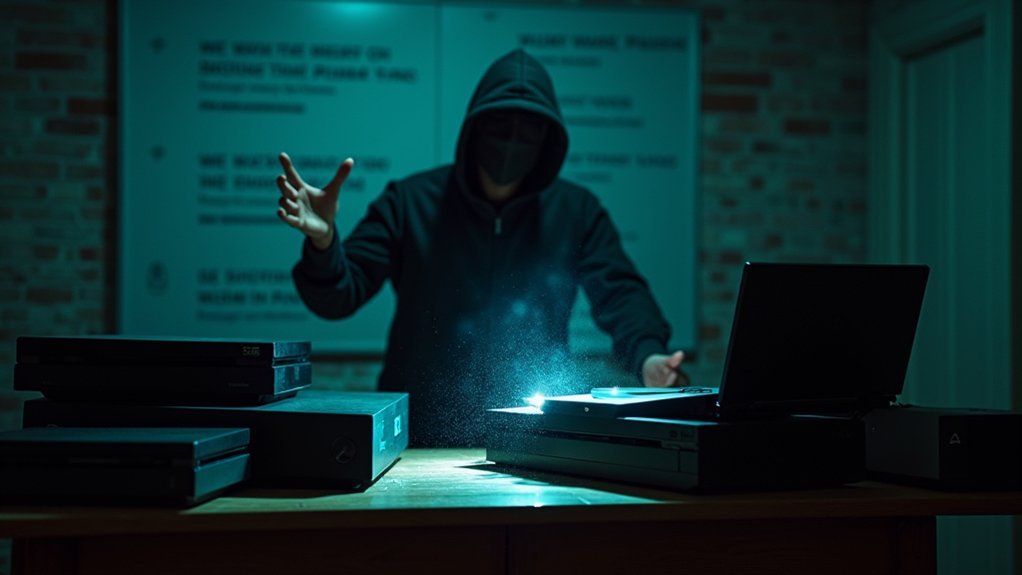
When sellers refuse to let you test or inspect a console before buying, they’re likely hiding something significant.
These sellers understand the risks of letting you discover defects that could kill the deal. Legitimate sellers welcome testing because they’re confident in their product’s condition.
Without hands-on inspection, you can’t detect critical issues like overheating, graphical glitches, or disc reading problems. These problems only surface during actual use, making pre-purchase testing essential for any console purchase.
Sellers who block inspections often lack confidence in their product or might be selling counterfeit items.
They’re banking on your willingness to buy blindly. Don’t take that gamble. Always insist on thorough testing and walk away from anyone who refuses. Your money deserves protection.
Console History Red Flags and Suspicious Repair Claims
Beyond refusing inspections, sellers often reveal red flags through what they tell you—or don’t tell you—about the console’s past.
Always ask about the console’s age and how frequently it was used, as heavy usage leads to significant wear and tear that affects performance. Inquire about previous issues like overheating or hardware failures—these indicate potential ongoing problems.
Be particularly wary of vague responses about the console history. If sellers give evasive answers about repairs or past malfunctions, they’re likely hiding something important.
When sellers mention recent fixes, treat these suspicious repair claims carefully. Request documentation proving the repairs were legitimate and used quality parts. Without verification, these claims often mask serious underlying problems you’ll discover after purchase.
Counterfeit Hardware and Bootleg Mini Consoles
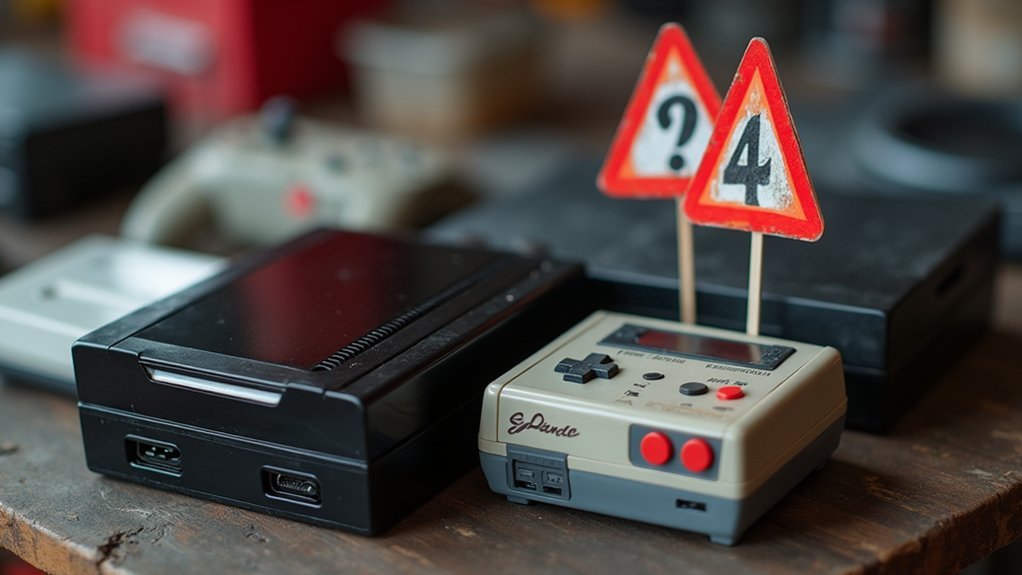
Since counterfeit consoles flood the used market, you’ll need sharp eyes to spot fake hardware that masqueraders as authentic gaming systems.
Bootleg mini consoles like fake NES and SNES Classics are particularly common. These counterfeits often claim more games than originals and feature suspicious packaging differences.
Counterfeit mini consoles frequently advertise inflated game counts and display telltale signs through altered packaging and branding inconsistencies.
To verify authenticity, check connection ports carefully—genuine mini consoles only support HDMI output, while fakes may offer alternative connections.
Examine cables and boxes for official branding, as counterfeit hardware typically lacks proper Nintendo logos and quality markings.
You’ll notice inferior build quality in bootlegs, leading to performance issues genuine consoles don’t experience.
Research specific models and their known counterfeit variants before purchasing to avoid disappointment.
No Return Policy or Warranty Protection Options
Buying a used console without warranty protection puts your investment at serious risk, especially when that system could be nearly two decades old. When buying used consoles, sellers often exclude return policies, leaving you stuck with defective hardware. The risks associated with no return policy purchases include complete financial loss if the console fails after purchase.
| Purchase Source | Warranty Coverage | Return Policy |
|---|---|---|
| Private Seller | None | Typically none |
| eBay Refurbished | 1-2 years | Yes |
| Retail Store | Limited/Extended options | Varies |
| Manufacturer Refurb | Up to 2 years | Yes |
Always verify seller policies before purchasing. Programs like eBay Refurbished provide valuable one-year warranties, extending to two years for manufacturer-refurbished units. Extended warranties become essential for older consoles prone to age-related failures.
Frequently Asked Questions
Is It Safe to Buy Used Games on Reddit?
Buying used games on Reddit isn’t entirely safe due to scam risks and lack of buyer protections. You’ll need to research sellers thoroughly, verify authenticity, use secure payments, and avoid deals that seem too good.
What Is the Newest Xbox?
The newest Xbox is the Xbox Series X, released November 10, 2020. You’ll get powerful performance, 4K gaming at 120fps, and backward compatibility with thousands of previous Xbox games.
How Much Is a Used Xbox One?
You’ll find used Xbox One consoles ranging from $150 to $250, depending on the model and condition. Original Xbox Ones cost less, while Xbox One X models command higher prices due to their enhanced capabilities.
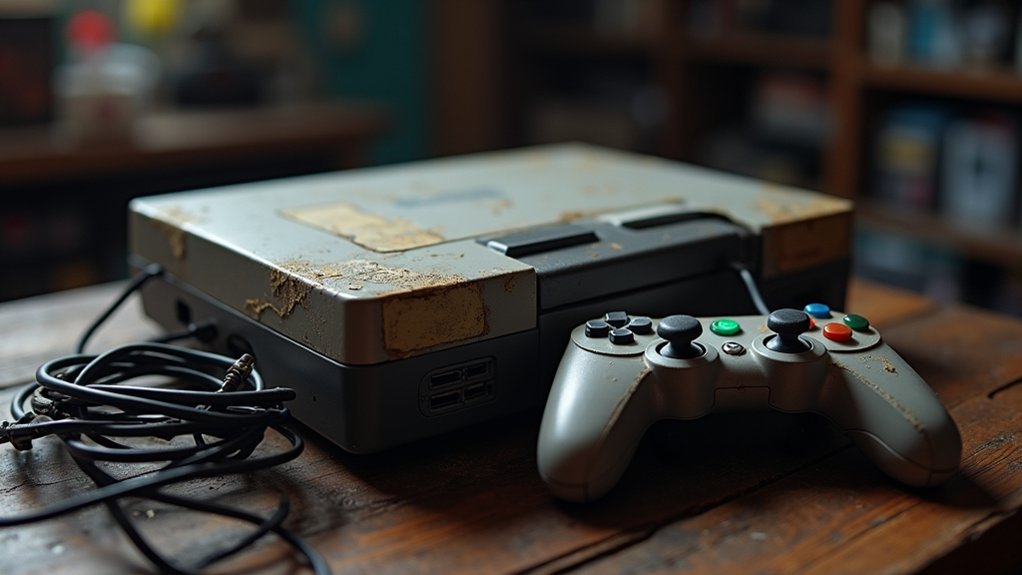


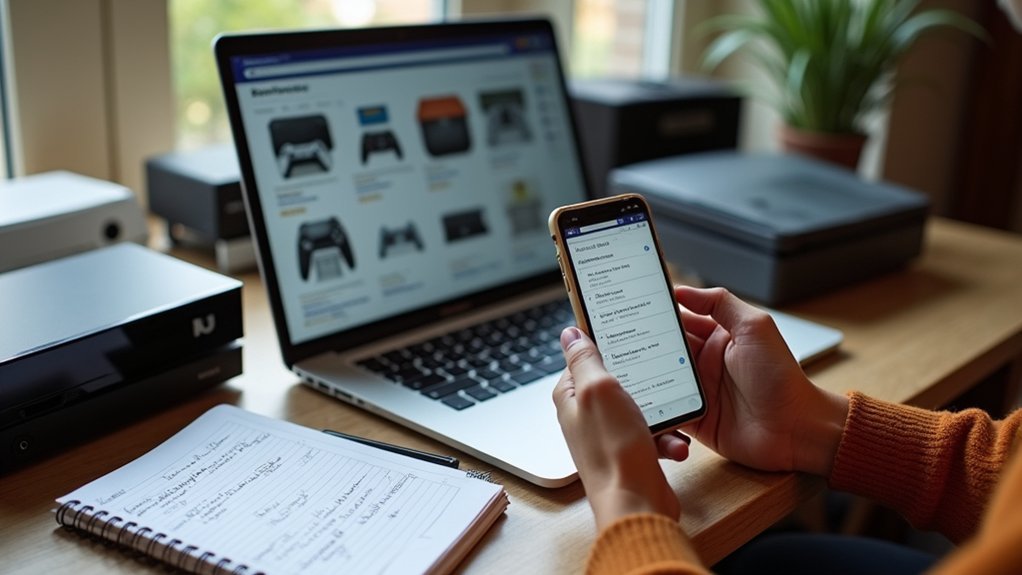
Leave a Reply